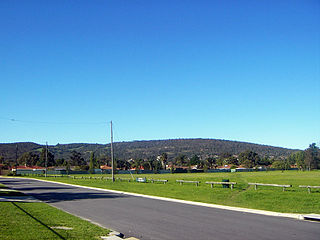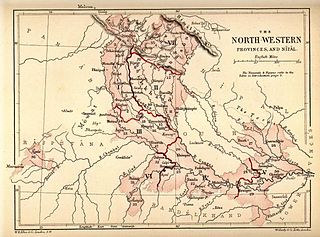| York Western Australia—Legislative Council | |
|---|---|
| State | Western Australia |
| Dates current | 1870–1890 |
| Namesake | York, Western Australia |
York was an electoral district of the Legislative Council of Western Australia from 1870 to 1890, during the period when the Legislative Council was the sole chamber of the Parliament of Western Australia.

The Western Australian Legislative Council is the upper house of the Parliament of Western Australia, a state of Australia. It is regarded as a house of review for legislation passed by the Legislative Assembly, the lower house. The two Houses of Parliament sit in Parliament House in the state capital, Perth.

The Parliament of Western Australia is the bicameral legislature of the Australian state of Western Australia, forming the legislative branch of the Government of Western Australia. The parliament consists of a lower house, the Legislative Assembly, an upper house, the Legislative Council and the Queen, represented by the Governor of Western Australia. The two Houses of Parliament sit in Parliament House in the state capital, Perth.
York was one of the original ten Legislative Council districts created by the Legislative Council Act 1870 (33 Vict, No. 13). The district's boundaries took in part of the Darling Scarp to the west and areas of the central, southern, and eastern Wheatbelt, but extended through to the Great Australian Bight and the border with South Australia. It was bordered by the district of Greenough to the north, the district of Toodyay to the north-west, the district of Swan to the west, and the districts of Fremantle (to 1874) and Murray and Williams (after 1874) to the south. [1]

The Darling Scarp, also referred to as the Darling Range or Darling Ranges, is a low escarpment running north-south to the east of the Swan Coastal Plain and Perth, Western Australia. The escarpment extends generally north of Bindoon, to the south of Pemberton. The adjacent Darling Plateau goes easterly to include Mount Bakewell near York and Mount Saddleback near Boddington. It was named after the Governor of New South Wales Lieutenant-General Ralph Darling.

The Wheatbelt is one of nine regions of Western Australia defined as administrative areas for the state's regional development, and a vernacular term for the area converted to agriculture during colonisation. It partially surrounds the Perth metropolitan area, extending north from Perth to the Mid West region, and east to the Goldfields-Esperance region. It is bordered to the south by the South West and Great Southern regions, and to the west by the Indian Ocean, the Perth metropolitan area, and the Peel region. Altogether, it has an area of 154,862 square kilometres (59,793 sq mi).

The Great Australian Bight is a large oceanic bight, or open bay, off the central and western portions of the southern coastline of mainland Australia.
Four men represented York in the Legislative Council between 1870 and 1890, with Charles Harper serving the longest (from 1884 to 1890). Harper went on to be elected to the Legislative Assembly after the advent of responsible government in 1890, while two other members for York, John Monger and Edward Hamersley, were nominated to the reconstituted Legislative Council. [2]

Charles Harper was a pastoralist, newspaper proprietor and politician in colonial Western Australia.

The Western Australian Legislative Assembly, or lower house, is one of the two chambers of the Parliament of Western Australia, an Australian state. The Parliament sits in Parliament House in the Western Australian capital, Perth.
Responsible government is a conception of a system of government that embodies the principle of parliamentary accountability, the foundation of the Westminster system of parliamentary democracy. Governments in Westminster democracies are responsible to parliament rather than to the monarch, or, in a colonial context, to the imperial government, and in a republican context, to the president, either in full or in part. If the parliament is bicameral, then the government is responsible first to the parliament's lower house, which is more representative than the upper house, as it has more members and they are always directly elected.
